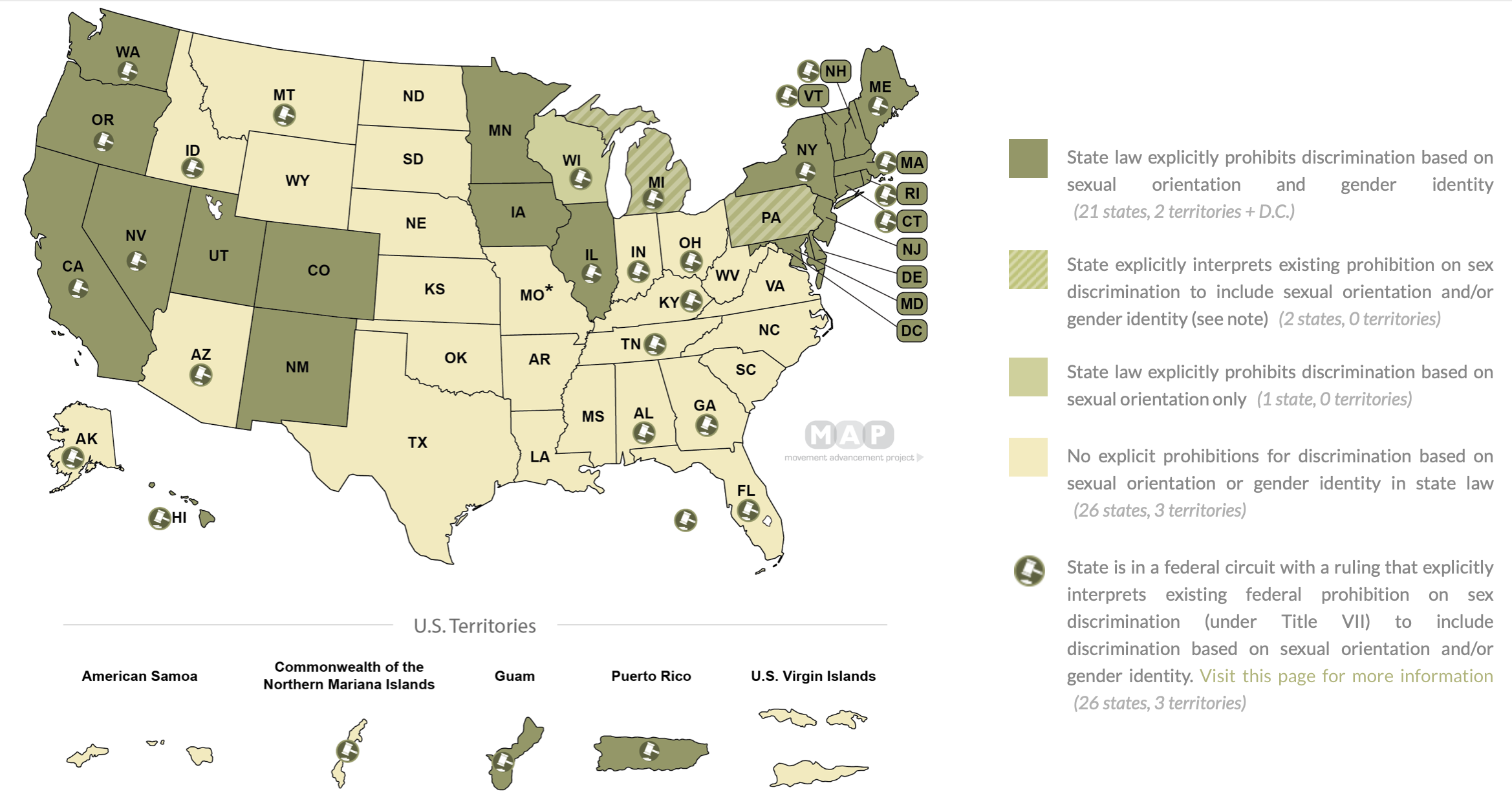CW: Sexual and physical assault/harassment, workplace harassment, transphobia
In December 2014, I graduated from Carlbrook, the Virginia-based therapeutic boarding school where I’d spent the previous year and a half. Though I credit the school with instilling many of the tools that I’ve used to navigate the beginning of adulthood, the school’s approach to my transness was a callous and ignorant “let’s pretend that this problem doesn’t exist and hope that it goes away.” From outing me to my family, to forbidding staff members to use my name and pronouns, to emotionally manipulating me into conforming to their contrived and restrictive expectations for male students, the administration fought my right to transition until the very end. Fortunately, their belligerent ignorance propelled me into advocacy work and played no small part in driving my present commitment to education, inclusivity, and unapologetic transgender visibility.
After spending ten hours in a car traveling back from Virginia to our New Jersey home with my then recently separated parents, I began planning how I would spend the next eight months before I started college. I intended to use the time to work and save money and I was determined to avoid landing myself in another invalidating environment. Therefore, my top criterion for a stopgap position was that my employer was committed to trans inclusivity and workplace equity. Though I was only out as transgender to a few people at the time, I hoped to begin transitioning in the coming months and wanted to feel comfortable and assured that my employer would support me.
I began my job search the same way as most millennials — I headed to Google. I searched “transgender friendly employers,” and as I scrolled through the results, I noticed two frequently recurring names — Trader Joe’s and Starbucks. After reading up on both, I decided that I could be happy working for either one, so I submitted a few applications online and waited to hear back. To my delight, Starbucks called me within two days, and a week later I had been hired as a barista at a store near my home.
From the moment I started with Starbucks, I knew I’d found a home.
From the moment I started with Starbucks, I knew I’d found a home. Many of my coworkers identified as queer themselves, and along with my manager, they created an inclusive environment where partners (what Starbucks calls employees) were celebrated for being our authentic selves. Within a few months, I began coming out to individual coworkers as “genderqueer,” and in doing so finally discovered the support and validation that I had so longed for while at Carlbrook.

Extremely comforted and encouraged by my coworkers’ reactions, I started to transition about eight months after coming home, right as I started as a student at Ramapo College of New Jersey.
Transitioning in the workplace can be extremely challenging. Transgender people frequently fall into the role of obligatory “trans educator” of the workplace and are asked any range of questions by cisgender folks who are often genuinely trying to become more knowledgable. I have seen many transgender people absolutely thrive in this role and find excitement and fulfillment in helping coworkers become better allies. However, there are many transgender people who do not wish to be the office educator but find themselves pigeonholed into that role regardless. Even for someone like me who loves bringing my work as a trans educator into my workspaces, it is incredibly frustrating when folks rely on me as their only source of information instead of using my knowledge as a starting point then putting in the work necessary to further their understanding of transgender experiences.
I think it is wonderful when folks want to pursue this knowledge, but being treated as the sole representative of any marginalized group quickly becomes exhausting. Beyond that, there is no monolithic trans experience, so it is extremely problematic if I am the only transgender person informing someone’s understanding of the entire transgender community. My trans narrative is not the trans narrative, and understanding my story only means that someone understands my story. It does not mean that they truly understand and support our community as a whole, and it does not make them a strong ally. To be a good ally, it is imperative that cisgender folx listen to an array of transgender stories and constantly pursue new information that will allow them to support and uplift our community.
For folks who are not always read as their gender, being gendered and named correctly at work often requires a choice between two hugely emotionally laborious actions: allow oneself to be repeatedly misgendered and deadnamed at work, or advocate for oneself by correcting others on one’s name and pronouns. Rebounding from the figurative gut punch that is being misgendered to advocate for oneself within the workspace requires immense mental fortitude, especially in workspaces that are not affirming of transgender identities where workers may rightfully fear harassment or retaliation for sticking up for themselves. T
he stress of being repeatedly misgendered or deadnamed at work may be considerably more than the stress of speaking up, but that doesn’t necessarily mean that someone will have the energy to speak up every single time that these occur. Though some managers support transgender employees and help ensure that all staff members name and gender them correctly, the unfortunate reality is that many transgender folks must endure workplaces where this does not occur. If you are an ally, it is your responsibility to speak up on behalf of transgender folks when you see this occur because otherwise, the entire burden of advocating for ourselves rests on our shoulders.
Many transgender employees face recurring micro-aggressions. As opposed to macro-aggressions, micro-aggressions are smaller but have a significant impact because they are repeated much more frequently. They may not be interpreted by coworkers or managers as significant or harmful but may have a significantly negative impact on the experience of transgender employees. One of the most common micro-aggressions in the workplace is the absence of trans-inclusive bathrooms or changing rooms. Many workspaces simply offer one room for “men” and one room for “women.” However, non-binary folks often feel unsafe, uncomfortable, and invalidated by both of these options because they do not fit into either of those binary categories.
Additionally, binary trans folks may also feel unsafe and uncomfortable in these restrooms, fearing attack or harassment for using either one. A best practice for employers is to offer gender-neutral restrooms as well as create a trans-inclusive bathroom policy that offers protections for transgender people using bathrooms in your workplace. If you are an ally, it is important that you recognize anti-trans micro-aggressions and ask what support trans folks in your workplace need from you, especially if your workplace does not have trans-inclusive policies in place.
Transgender people may also face significant harassment and outright discrimination in the workplace, especially in states without explicit legal protections for transgender employees. In these states, transgender folks may be refused a job, harassed at work, or fired simply for being transgender. Trans folx also face an increase in physical or sexual harassment and assault at work. Law enforcement frequently discounts accusations of sexual violence by trans folx based on the transphobic assumption that nobody could be sexually attracted to us and therefore nobody would sexually harass or assault us.
This is absurd for a few reasons. First, sexual harassment and assault are not typically a result of sexual desire. Rather, they are most often the result of an individual’s need for power. Marginalized people, such as transgender people, generally hold less power in a workplace than more privileged folks. Most often, it is these folks who perpetrate harassment or assault against us in order to fulfill their need to assert dominance or power over us. Second, the assertion that folks simply aren’t attracted to trans people is blatantly untrue, and in many cases, people even fetishize our bodies. When transgender people are physically harassed or assaulted, law enforcement in many states will look the other way and allow it to continue.
Transitioning in a customer service role adds an extra layer of difficulty because on top of worrying about your coworkers’ behavior, you must also worry about your customers’. Transitioning is extremely vulnerable and often uncomfortable, and by the very nature of the industry, many trans customer service workers are essentially on a stage for much of our transition. While many folks are able to land a customer service role with a company whose policies explicitly protect transgender folks from workplace harassment — such as Starbucks — these polices can only enforce consequences for our coworkers, not for the hundreds of customers we serve daily, unless a customer is posing a clear threat to an employee’s physical safety.
However, the average customer service worker interacts with far more customers each day than coworkers, so much of the transphobic harassment, bigotry, and discrimination that trans employees face in these environments is perpetrated by customers. Managers should feel responsible for mediating these situations and protecting the emotional safety of their employees, but many of them sadly do not.
When I told my boss that I was starting to transition, she was extremely supportive. She acknowledged that she may slip up when using my name or pronouns at the beginning, but asked that I correct her if she did. In my time at that store, not once did I have a trans-related incident with another partner. When partners slipped up using my name or pronouns, I felt empowered to correct them, and never experienced retaliation for doing so. However, navigating interactions with customers was frequently distressing. For customers with whom I had a good rapport, I felt safe informing them that I was transitioning and asking them to use my new name and pronouns. However, for guests I didn’t know as well, I could not even fathom how to approach that discussion.
Even when I began being read as female outside of work, customers who I’d known since the beginning of my Starbucks journey continued to misgender me. My coworkers occasionally corrected guests if they overheard this, but most of the burden to advocate for myself fell on me. Furthermore, the “customer is always right” mindset of customer service spaces often disempowers marginalized workers from advocating for our needs for fear of making a customer feel “wrong.” Although I was confident that my employer would support me in respectfully asserting “my pronouns are she and her” with guests who misgendered me, I still feared how customers would respond if I overstepped the typical expectation that service workers do not correct their customers.
Though most of my guests were likely acting from a place of genuine ignorance rather than malice, being continually misgendered at work began to weigh on me. There were a handful of customers who did realize that I was transitioning, were seemingly uncomfortable with it, and requested to be served by other baristas, but this did not occur nearly as frequently. I endured my discomfort for eight months, but eventually realized that if I transferred to another store, I could start fresh with a new bunch of regulars who had never known me pre-transition, would read me as a cisgender woman, and would gender and name me correctly simply because they had only ever known me as Arielle.
Slowly, I began to weave advocacy for my community into my work as a barista, first through offering resources and information to those who needed these and more recently by hosting trans literacy trainings.
In my second store, I initially tried to leave behind my trans existence and enjoy the comfort of being read as cisgender. I was happy with this for a bit, but I slowly became uncomfortable with the realization that in neglecting to acknowledge my trans identity, I was erasing an important part of my identity that I had spent years fighting to explore. Slowly, I began to weave advocacy for my community into my work as a barista, first through offering resources and information to those who needed these and more recently by hosting trans literacy trainings. Although I acknowledge that my experiences occurred within an affirming environment and therefore are not necessarily generalizable to lesser-affirming spaces, there are several tools and lessons I’ve learned that I’ve personally found extremely useful and effective and I believe could help others as well.
If you work for an employer large enough to have a Human Resources and/or Inclusivity & Diversity department, contact them.
Ask them about your company’s workplace protections for transgender people. This will help you to understand your rights. At Starbucks, these resources are available on our employee information hub. Learning about our workplace protections helped me to feel safer at work and empowered me to advocate for myself behind and over the bar.
In addition, ask them about any inclusivity trainings that they offer. These can help guide your managers and/or coworkers on how to be better allies to marginalized folx in your workplace. Starbucks offers reading materials centered around inclusivity that are available to all Starbucks Partners. As of now, they do not provide in-store trainings on trans inclusivity specifically, so I actually created and presented a transgender literacy training for managers to ten of the upper leaders in my location.
If you’d like to see that presentation, it’s available here. You’re welcome to use this presentation in your own workplaces, but I do ask that you credit me for creating the portions that I made myself (i.e. anywhere that it’s not specifically noted that something is from an external resource).
If your manager is trans-affirming, tell them what you need. Let them take care of the rest.
The emotional labor of trans education and advocacy in the workplace does not all have to fall on you, though I recognize it often feels like it does. Managers are responsible for helping to ensure the emotional safety of all their employees, and an effective and affirming leader will listen to you when you tell them what you need. If you have a trans-affirming manager with whom you feel comfortable talking, try telling them what you need and let them take care of the rest.
If you have external resources that can help others understand trans identities, bring them into work.
If you have an affirming manager or a human resources department, let them know you intend to bring in external resources. Some companies like to prioritize the use of internal resources over external ones when possible, but when these are either unavailable or insufficient, bringing in external resources can be extremely powerful and beneficial.
If you don’t have an affirming manager or HR department, bring these resources anyway. These resources can help your coworkers and managers better understand trans people.
Some resources I’ve used are listed below.
If you are struggling to find a job that is affirming, there are resources that can help.
I initially just Google searched “trans-friendly employers,” but HRC’s Corporate Equality Index is an extremely thorough tool for navigating this process.
I recognize that finding a new job can be scary and extremely difficult for trans folk, especially in states without explicit workplace protections on the basis of gender identity. HRC’s guide lists employers who offer workplace guidelines or policies that explicitly protect LGBTQ+ workers. I hope that using this guide can alleviate some common concerns about pursuing new work as a transgender person, such as not being hired or being harassed in a new workspace on the basis that you are transgender.
You have the right to be physically and emotionally safe at work.
Note: I want to clarify that when I say “right” in this section, I do not mean the legal sense of the term — workplace protections for transgender people vary by state. I want to make clear that I am in no way an expert on transgender legal protections in the workplace, but there are great resources out there created by those who are. If you have further questions about your rights as a transgender employee in your state, visit Transgender Law Center’s Know Your Rights guide.
If someone is misgendering you, you have the right to correct them.
If a coworker is harassing you, you have the right to step away.
If a customer threatens your physical or emotional safety, you have the right to ask them to leave your establishment.
If they refuse to leave and you feel you are in physical danger based on their words or actions, you have the right to call 911.
If you feel unsafe taking these steps, you have the right to elevate the situation to a manager or supervisor and ask them to handle the situation.
As of now, 21 U.S. states + Washington D.C. offer explicit protections for transgender employees under Title VII. In these states, the law protects you from workplace discrimination should you choose to take any of the above steps. If you are in one of these states and are facing backlash from managers or coworkers for taking these steps, or face discrimination or harassment of any sort on the basis that you are transgender, you are protected under the law and have the right to report the situation. In many cases, you may even have the right to sue your employer. Additionally, if your workplace offers protections for trans people but your state does not, you can still report situations of harassment or abuse to your HR department.

Sometimes, educating may feel like too much. Above all else, be kind to yourself and trust your intuition.
Though some people can find it helpful to advocate for their community in the workplace, you are not required to be anyone’s teacher. Ever. Period.
It is common for others to demand free education from members of a marginalized group about that group’s lived experiences. This can be hugely tokenizing and emotionally laborious, and you are not required to perform that emotional labor. You are not letting your community down when you choose to deny the role of educator. On the contrary, you are uplifting a member of that community — you! — by trusting your gut and taking care of yourself. And that is truly wonderful.
Resources for transgender employees or managers:
It’s Pronounced Metrosexual — The Genderbread Person
GLAAD — Tips for Allies of Transgender People
Amhert College — Gender Pronouns Guide
Let’s Queer Things Up!– Sam Dylan Finch (blog) — What you’re actually saying when you ignore someone’s gender pronouns
Everyday Feminism —11 Easy Ways Managers and Employers Can Foster Trans-Inclusive Work Environments
Transgender Law Center— Resources for trans employees with information about your workplace rights, tips for working with trans coworkers, tips for lawyers working with trans employees, and a model employer policy
HRC — Transgender Inclusion in the Workplace: A Toolkit for Employers



Pingback: I Do Not Have To Perform Your Emotional Labor – Trans and Caffeinated
Pingback: The Nurturing Power of a Trans Community – Trans and Caffeinated
loving the blog soooo much! Thank you for all the time and effort you put into spreading positivity and education 🙂
I’m so honored you’re enjoying it, thanks for reading!!! and thanks for the kind words 🙂
Pingback: The Nurturing, Inspiring Power of a Trans Community • Trans & Caffeinated